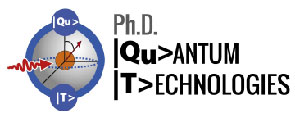Description
Since its theoretical prediction in 1962 [1], the tunnelling current (with no applied voltage) that arises in a system constituted by two superconductors separated by a barrier has been the subject of many scientific studies. It was quite soon discovered that the current-phase relation I=ICsin(ϕ) (where ϕ is the phase difference between the order parameter of the two superconductors) as predicted in [1] does not always apply, depending both on the temperature and the barrier of the system. As a matter of fact, quite different types of current-phase relation can be found using as the separating barrier either insulators, normal metals, and superconductors, or more general constrictions of different heights and widths both in condensed matter and in ultra-cold atoms experiments.
In order to better understand the mechanism at the basis of the DC Josephson effect and to model both the current-phase relation and the critical value IC, several theoretical and numerical approaches have been developed. The early works relied mostly on the Ginzburg-Landau equations [2][3][4][5][6], but there were also attempts to use microscopic theories [7][8][9] or perturbative calculations [10]. More recently methods have been developed based on the quasi-classical Green’s functions [11][12] and the Bogoliubov-deGennes (BdG) equations [13][14].
Despite some good agreements with the experimental data [15][11][12], none of these approaches could be successfully applied to the following circumstances of physical interest:
over the whole temperature range from T=0 to T=Tc;
to all possible barrier widths and heights;
along (most part of) the BCS-BEC crossover.
The main reason underlying of our study of the DC Josephson effect has been to fill this gap. To this end, we have made use of a local-phase-density approximation to the BdG equations, both in its local (LPDA) [16] and non-local (NLPDA) [17] versions. Both LPDA and NLPDA approaches, which are computationally faster and less storage demanding than the BdG equations, give us the opportunity to study the behavior of the Josephson current with reliable results along the BCS side of the BCS-BEC crossover, with no limitations on the barrier width and down to low temperatures.
REFERENCES:
[1] B.D. Josephson. Possible new effects in superconductive tunnelling.
Physics letters, 1(7):251–253, 1962.
[2] P. De Gennes. Self-consistent calculation of the josephson current. Phys.
letters, 5, 1963.
[3] P. de Gennes. Boundary effects in superconductors. Reviews of Modern
Physics, 36(1):225, 1964.
[4] H.J. Fink. Supercurrents through superconducting-normal-superconducting
proximity layers. i. analytic solution. Physical Review B, 14(3):1028, 1976.
[5] H.J. Fink and RS Poulsen. Supercurrents through proximity layers. ii. numeri-
cal solution of superconducting-normal-superconducting and superconducting-
superconducting-superconducting weak links. Physical Review B, 19(11):5716,
1979.
[6] A. Baratoff, J.A. Blackburn, and Brian B Schwartz. Current-phase
relationship in short superconducting weak leans. Physical Review Letters,
25(16):1096, 1970.
[7] L. Aslamazov,A. Larkin, Yu N Ovchinnikov, and Z Fiz. Josephson effect in
superconductors separated by a normal metal. Sov. Phys. JETP, 28(1):171,
1969.
[8] I.O. Kulik. Macroscopic quantization and the proximity effect in sns junctions. Soviet Journal of Experimental and Theoretical Physics, 30:944, 1969.
[9] J. Bardeen and J.L. Johnson. Josephson current flow in pure
superconducting-normal-superconducting junctions.Physical Review B,5(1):72, 1972.
[10] V. Ambegaokar and A. Baratoff. Tunneling between superconductors.
Physical Review Letters, 10(11):486, 1963.
[11] F.K. Wilhelm, A.D. Zaikin, and G. Schön. Superconducting current
in narrow proximity wires. Czechoslovak Journal of Physics, 46(4):2395–2396,
1996.
[12] P. Dubos, H. Courtois, B. Pannetier, F.K. Wilhelm, A.D. Zaikin, and G. Schön.
Josephson critical current in a long mesoscopic sns junction. Physical Review
B, 63(6):064502, 2001.
[13] A. Spuntarelli, P. Pieri, and G. Calvanese Strinati. Solu-
tion of the bogoliubov–de gennes equations at zero temperature throughout
the bcs–bec crossover: Josephson and related effects. Physics Reports, 488(4-
5):111–167, 2010.
[14] G. Watanabe, F. Dalfovo, L.P. Pitaevskii, and S. Stringari.
Effects of periodic potentials on the critical velocity of superfluid fermi gases
in the bcs-bec crossover. Physical Review A, 83(3):033621, 2011.
[15] C.S. Lim, J.D. Leslie, H.J.T. Smith, P. Vashishta, and J.P. Carbotte. Temperature variation of the dc josephson current in pb-pb tunnel junctions. Physical Review B, 2(6):1651, 1970.
[16] S. Simonucci and G.C. Strinati. Equation for the superfluid gap obtained by
coarse graining the bogoliubov–de gennes equations throughout the bcs-bec
crossover. Phys. Rev. B, 89:054511, Feb 2014.
[17] S. Simonucci and G. Calvanese Strinati. Nonlocal equation for the supercon-
ducting gap parameter. Phys. Rev. B, 96:054502, Aug 2017.

